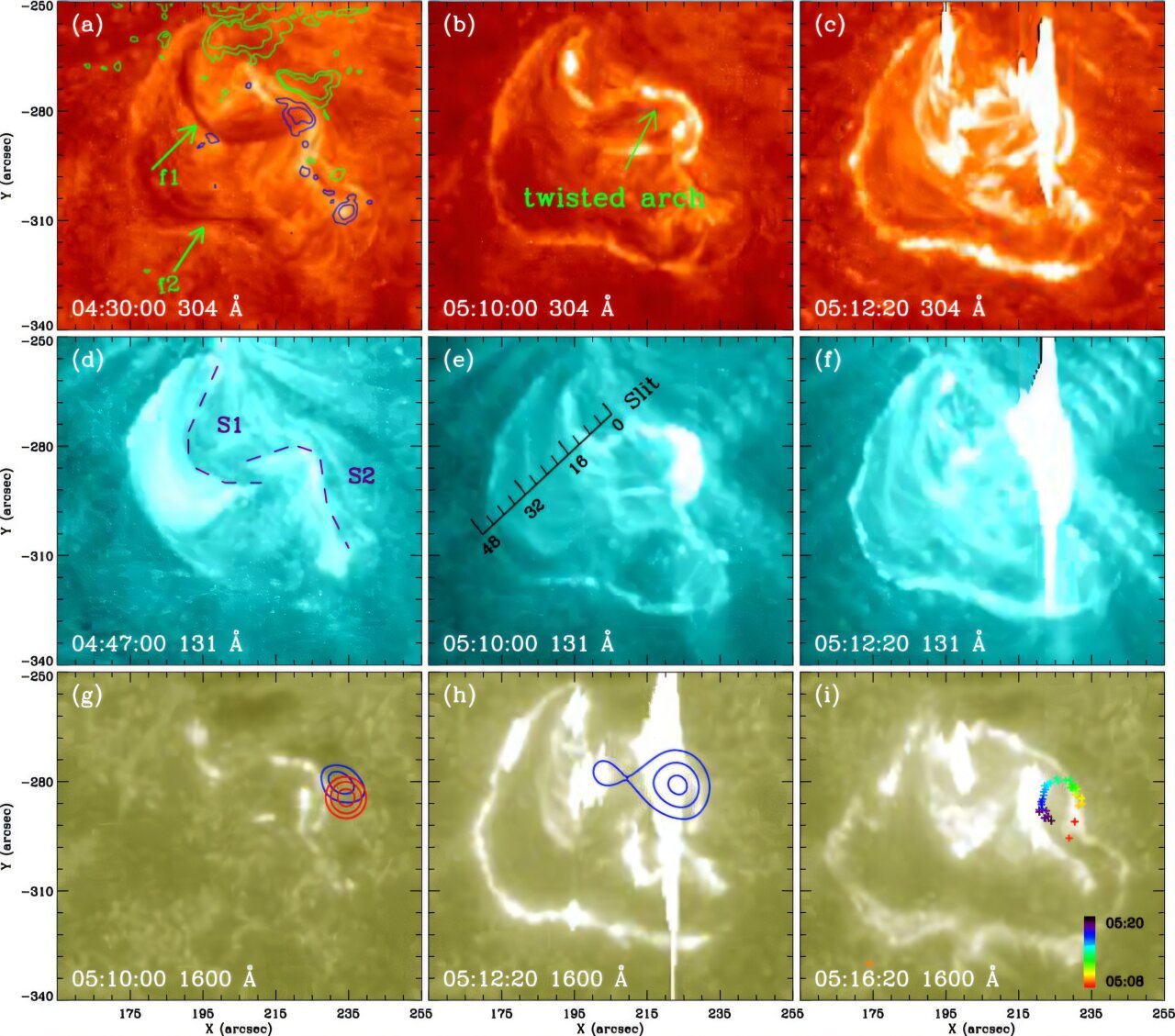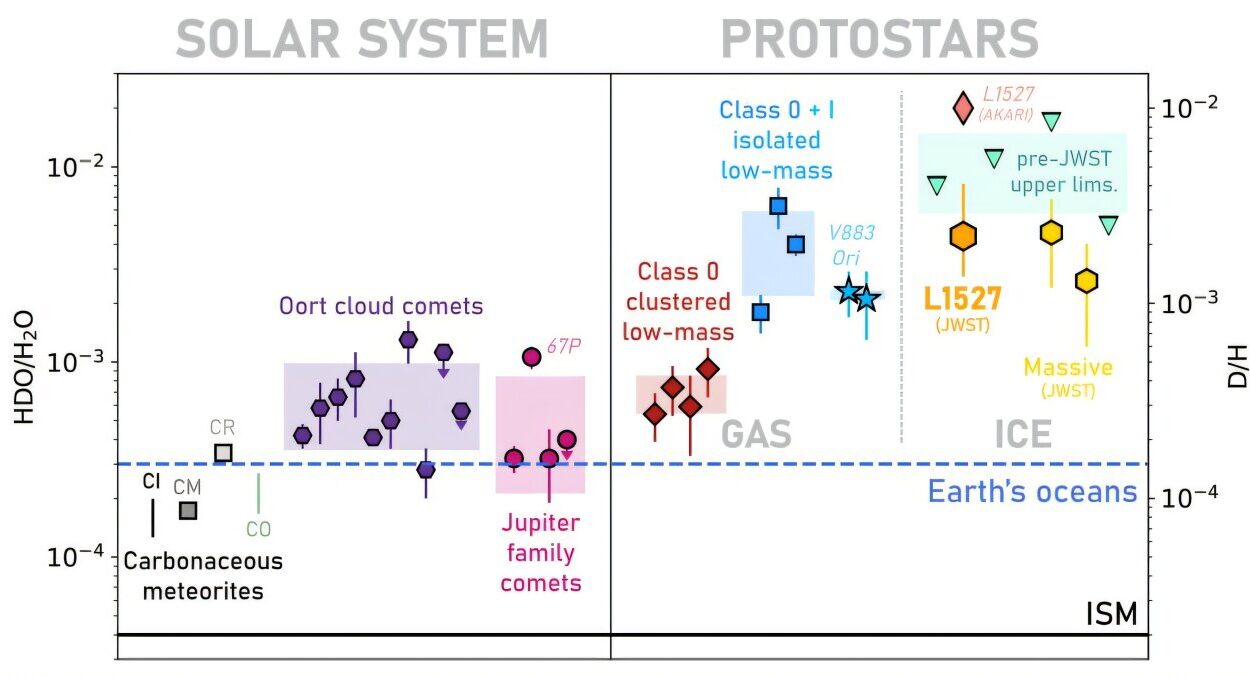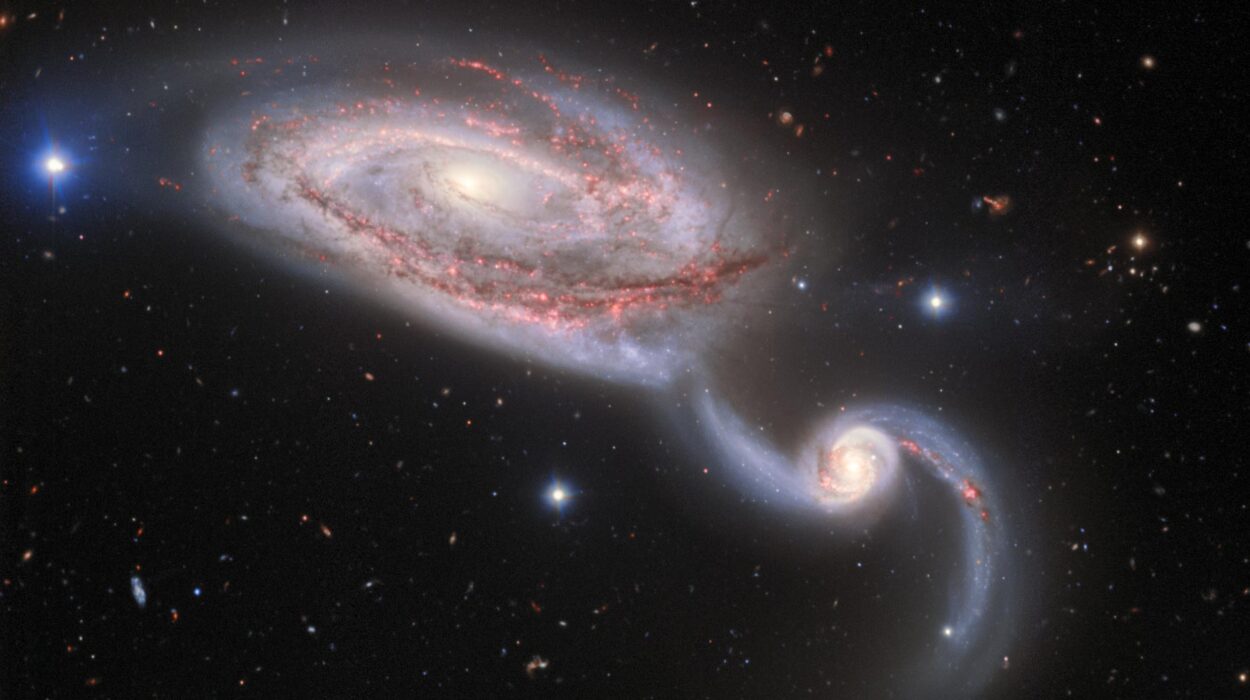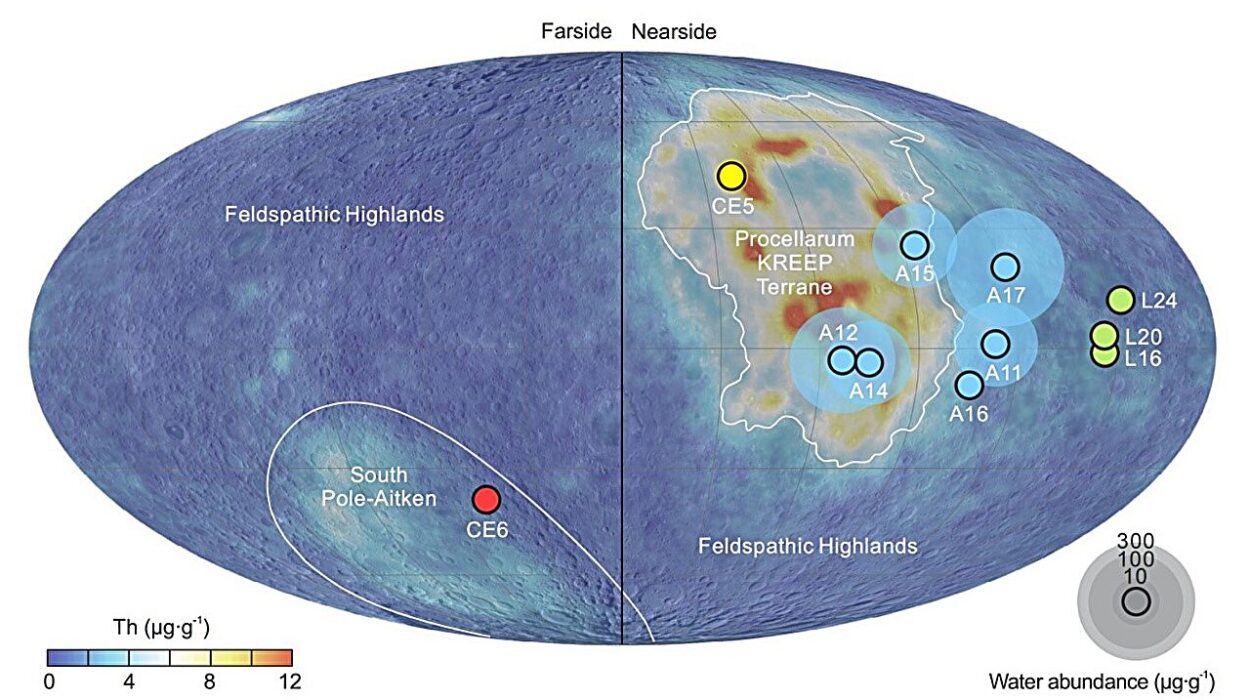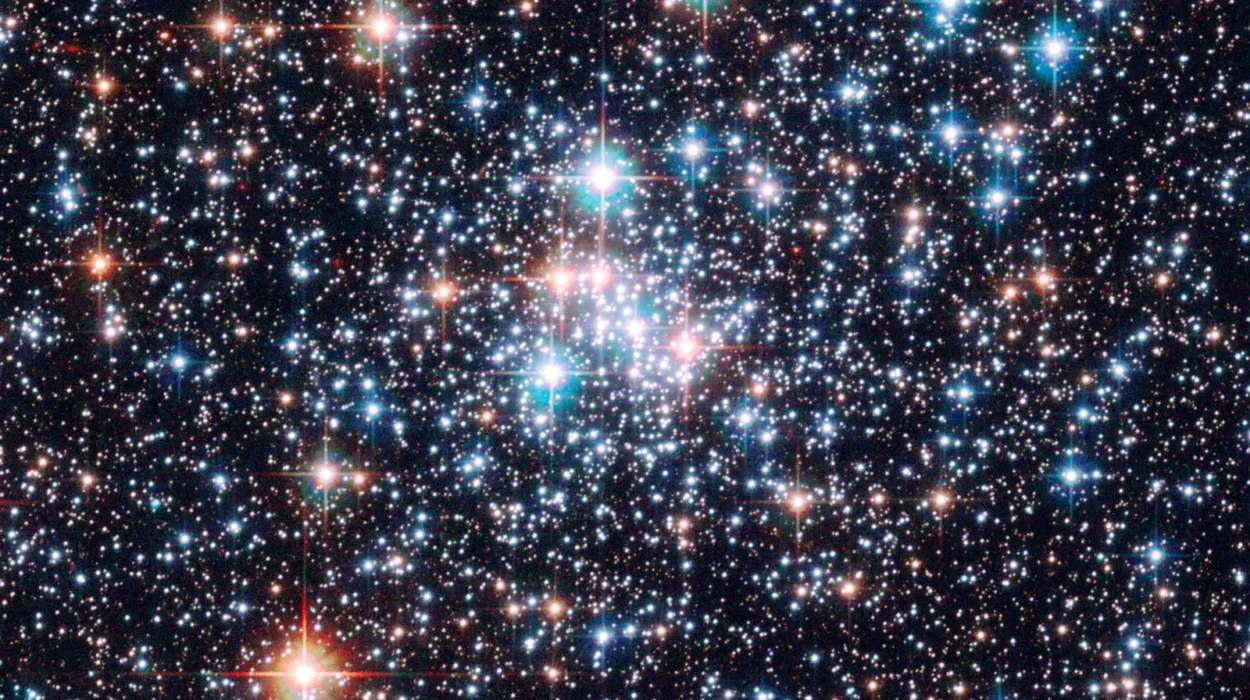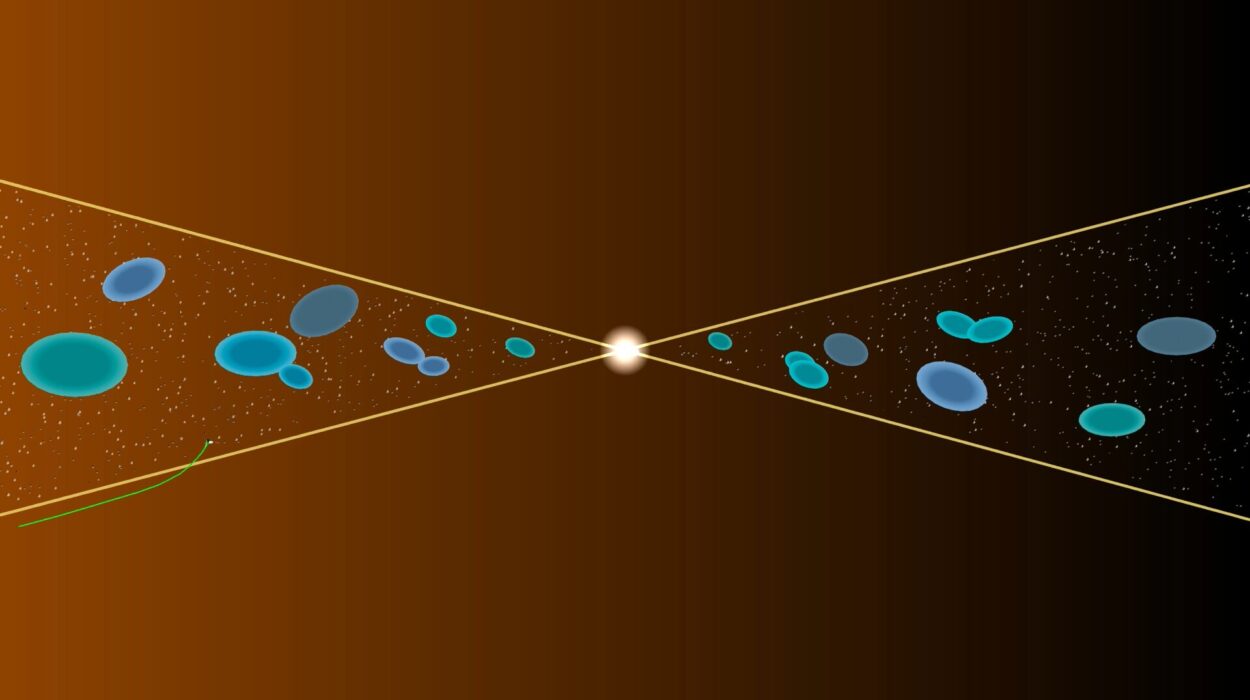In the silent void of space, the Sun roared.
It was an X-class solar flare—one of the most powerful categories of eruptions our star can unleash—blazing with the energy of a billion hydrogen bombs. But while this explosive event dazzled the outer solar atmosphere, something subtler and far more mysterious was unfolding just beneath the surface: a ripple of electricity, racing downward through the layers of solar plasma, rearranging magnetic forces in mere seconds.
Now, for the first time, scientists have captured this elusive electric drama in astonishing detail.
Led by Dr. Shen Jinhua of the Xinjiang Astronomical Observatory (XAO) of the Chinese Academy of Sciences, a team of researchers has used high-speed solar observations to watch how vertical electric currents (VECs) shift and evolve in real time during an X1.1-class flare. Their findings, published in The Astrophysical Journal, challenge long-held beliefs about the Sun’s magnetic behavior and open new windows into understanding one of the most complex forces in our solar system.
Seeing the Unseeable
The Sun is no stranger to fury. Solar flares are sudden eruptions of energy that can send charged particles hurtling toward Earth, sometimes disrupting satellites, GPS systems, and even power grids. But the exact way energy moves through the Sun’s layers—especially how it surges from the corona down into the photosphere (the visible surface)—has long puzzled scientists.
To investigate, Dr. Shen’s team turned to NASA’s Solar Dynamics Observatory (SDO), which captures high-resolution images of the Sun in both visible light and ultraviolet wavelengths. Using data from two of its powerful instruments—the Helioseismic and Magnetic Imager (HMI) and the Atmospheric Imaging Assembly (AIA)—the team created time-lapse magnetic maps with a resolution of just 135 seconds.
Their focus: active region NOAA 11890, a swirling sunspot cluster brimming with magnetic tension. On the day of the flare, this region became a stage for an invisible battle of forces.
The Currents Beneath the Flare
As the Sun’s corona exploded outward in the X1.1 flare, Dr. Shen’s team noticed something remarkable closer to the surface. In the photosphere, the Sun’s dense outer shell, electric currents didn’t just emerge randomly—they surged in structured, rapidly evolving patterns known as VEC ribbons.
These ribbons first appeared as a pair of twin streaks—one positive, one negative—stretching like scars along the polarity inversion line (PIL), the invisible boundary where opposite magnetic fields collide. But what stunned the researchers was not just that these VEC ribbons formed. It was how they moved.
Instead of separating, as traditional models predicted, the ribbons seemed to move toward each other. They closed in, converging near the very center of the flare’s magnetic activity. In contrast, the flare’s bright ultraviolet loops and white-light ribbons above them expanded outward, like wings unfurling after a jolt of lightning.
It was, in essence, the Sun breathing in while exhaling—a simultaneous contraction and expansion, electric and radiant energy moving in opposite directions.
“This is the first observational evidence that VEC ribbons converge during a solar flare, rather than separate,” Dr. Shen said. “This overturns the classical view and points to a much more dynamic role of the photospheric magnetic field in the flare process.”
Magnetic Reconnection: Where Energy Explodes
At the heart of this new understanding is a phenomenon known as magnetic reconnection—a process where twisted magnetic field lines snap, rearrange, and release vast amounts of energy. Scientists believe reconnection is what triggers most solar flares.
But until now, it was unclear how reconnection affected the Sun’s lower layers.
The researchers found that just before the flare, the sunspot region showed signs of intense shearing and converging magnetic motions—oppositely directed flows grinding against each other like tectonic plates. These motions, concentrated along the light bridge of the sunspot, likely stored up energy that was suddenly released in the flare.
More importantly, the current ribbons—the very fingerprints of electric energy—formed J-shaped structures along the PIL, echoing theoretical predictions from 3D reconnection models inside magnetic flux ropes.
And the strongest clue? The VEC ribbons emerged precisely at the edges of rapidly intensifying horizontal magnetic fields. It was as if the flare didn’t just erupt upwards—it carved a magnetic trench into the Sun’s surface, pulling the electric currents toward the core like iron filings drawn to a magnet.
A New Map of Solar Violence
Previous models of solar flares assumed that VECs in the photosphere mirrored the motion of the flare’s bright loops higher up—spreading apart, separating like tectonic rifts. But this new study suggests something much more intricate.
The surface magnetic field doesn’t just respond to the flare. It leads it. It molds it. And during the flare, the currents don’t simply scatter—they gather. They converge.
“The rapid movement of the photospheric magnetic field during the flare leads to the converging movement of the current,” the team wrote. “This represents a fundamentally new understanding of flare dynamics.”
In other words, while the upper solar atmosphere bursts outward in a spectacular firestorm, the lower layers tighten, compress, and shift in a way that actively shapes the flare itself.
Why It Matters for Earth
These insights aren’t just fascinating—they’re practical. Solar flares and related events like coronal mass ejections (CMEs) can affect Earth’s magnetosphere, sometimes causing radio blackouts, navigation errors, and even satellite damage. The more we understand how energy moves inside the Sun, the better we can predict when and how these storms might strike us.
Moreover, studying the precise evolution of electric currents during flares could help scientists build more accurate models of magnetic reconnection—not just on the Sun, but in other cosmic settings, from neutron stars to black hole accretion disks.
And, perhaps most surprisingly, the study shows that even at the Sun’s visible surface, far from the seething, superheated corona, the choreography of magnetism and electricity is still unfolding in complex, beautiful patterns.
The Next Frontier in Solar Physics
Dr. Shen’s team has not only provided the first clear view of converging VECs during a solar flare—they’ve also opened new questions.
What controls the speed and shape of these converging ribbons? Can they be used to predict the intensity of future flares? Are similar current dynamics seen in other stars? Could new instruments, with even faster imaging or higher resolution, reveal even more hidden electric movements?
As solar cycle 25 ramps up, with the Sun expected to become more active in the coming years, studies like this may prove crucial. With the right tools and enough eyes on the sky, we may one day learn to read the Sun’s magnetic whispers before it shouts.
Because even in silence, the Sun speaks.
Reference: Jinhua Shen et al, Rapid Spatiotemporal Evolution of Vertical Electric Currents during an X-class Flare, The Astrophysical Journal (2025). DOI: 10.3847/1538-4357/add92d
